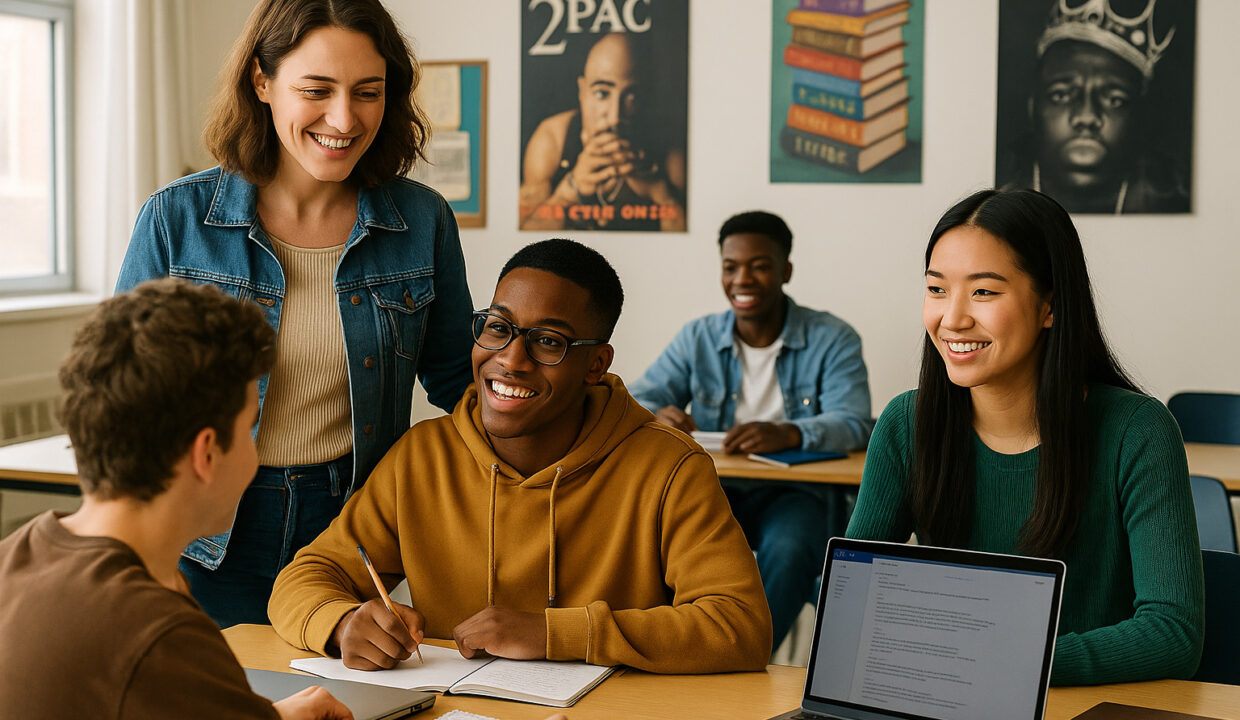
Education is no longer confined to textbooks and chalkboards. Across classrooms in the U.S. and beyond, teachers are blending hip-hop, movies, and pop culture into lessons on history and literature. What was once considered entertainment is now becoming an educational bridge — engaging students, improving retention, and making learning more relevant in today’s digital age.
Rhymes and Revolution: Hip-Hop as a History Lesson
Hip-hop has always been more than music; it’s a form of storytelling deeply rooted in social commentary. Educators are using iconic lyrics to unpack complex topics like civil rights, racial inequality, and urban history. For example, songs by artists such as Tupac Shakur or Kendrick Lamar serve as primary sources that reflect the struggles and triumphs of marginalized communities. This approach not only teaches historical context but also gives students a sense of cultural ownership over the narratives that shape their world.
Pop Culture as a Literary Lens
Pop culture references, from Marvel movies to modern television, are now being used to explain classic literary themes. Teachers draw parallels between superheroes and epic heroes, comparing characters like Captain America to figures from Greek mythology or Shakespearean drama. Similarly, analyzing song lyrics or movie dialogues helps students grasp symbolism, tone, and perspective in a relatable way. The result? Literature feels less like an academic chore and more like a mirror of modern life.
Engagement Through Relevance
Traditional methods can feel distant to students raised in an age of streaming and social media. Integrating pop culture creates an immediate connection, bridging generational gaps and stimulating discussion. Students become active participants rather than passive listeners. This method also boosts critical thinking, as learners compare how different art forms express similar social or moral themes across time.
Conclusion
By merging hip-hop and pop culture with history and literature, educators are proving that learning doesn’t have to be outdated to be effective. When classrooms resonate with students’ real-world experiences, education transforms into something deeper — a dialogue between the past and present that empowers the next generation to think, question, and create.

